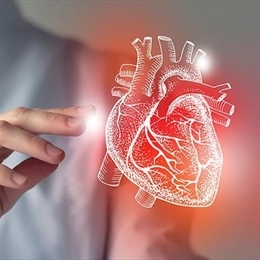Scintigraphy

Scintigraphy implies the imaging method used in the field of nuclear medicine. A radioactive substance is used in all scintigraphic imaging studies. A specific radioactive substance is administered for each tissue or organ that is imaged and allowed to be distributed homogeneously in the body. Next, scintigraphic images of the target zone are obtained.
The principle of scintigraphic imaging is based on verifying or ruling out a disease diagnosis by visualizing the uptake of the radioactive substance by the organ or the tissue imaged.
Similar to conventional roentgenogram, MRI, CT, and ultrasound scanning, scintigraphy determines the level of the radioactive substance in various organs and tissues (brain, liver, kidneys, heart, bones, lacrimal canal, lymphatic circulation, stomach, intestines, parathyroid gland, lymph nodes, testis, and salivary gland, etc.).
For example, myocardial perfusion scintigraphy is scanned to measure the amount of blood supplied to the heart muscle in patients with a life-threatening heart disease or myocardial infarction.
Examples of scintigraphic scanning are written below, and you will be informed in detail about each scintigraphic scanning at our hospital. Scintigraphic scanning enables diagnosing conditions that cannot be visualized with conventional imaging methods. Moreover, it plays a vital role in following up with the patient and evaluating the response to the treatment, as the activity level is measured. The ability to find metastasis and the spread of metastasis in cancer is a crucial feature of this imaging method.
• Examples of scintigraphic scanning are listed below, although it is not an exhaustive list of the intended uses:
• Bone Scan
• Myocardial Perfusion Scan
• Lacrimal scintigraphy (dacryoscintigraphy)
• Lymphoscintigraphy
• Gastrointestinal scintigraphy
• Parathyroid scintigraphy
• Lymph node mapping or scintigraphy
• Testicular scintigraphy
• Thyroid scan
• Lung Scintigraphy
If your doctor requests scintigraphic imaging, an appointment is first scheduled. Next, you will be given an information brochure, where all issues are written that require attention when you present to the nuclear medicine department at the appointment date. Moreover, nuclear medicine physicians and other healthcare professionals will explain precautions and warnings specific to your condition.
Due to exposure to radiation (X-ray) during scintigraphic scans, if you are pregnant or breastfeeding, you should inform your doctor and healthcare personnel.
For scintigraphic scanning, you will be informed about the time you should stop eating and drinking (excluding water), depending on the radioactive substance used. It will also be questioned whether or not you have experienced an allergic reaction to contrast agents in the past.
When the imaging study is scheduled, you must notify your doctor and healthcare professionals about all your prescription and over-the-counter medicines, herbal products, and vitamin and mineral supplements.
After the radioactive substance to be used for scintigraphic imaging is administered through the mouth or a vein (intravenous), you will be asked to relax in a room for a period that will be notified to you to ensure that the radioactive substance is homogeneously distributed throughout the body. After this time elapses, you will be transferred to the room, where images will obtained.
Once the scanning is completed, you will be made recommendations depending on the radioactive substance used if you are not an inpatient. Drinking plenty of fluids after the scan will help to accelerate the excretion of the radioactive material.
Our radiologist will review the images, and a report will be issued in the light of the indication.
When your report is available to the doctor who requested the scintigraphic imaging, your diagnosis, treatment, and follow-up period will be planned, and you will be informed.




























